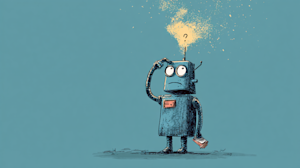



AI coding, vibe coding and agentic swarm have made a dramatic and astonishing recent market entrance, with the AI Code Tools market valued at $4.8 billion and expected to grow at a 23% annual rate. Enterprises are grappling with AI coding agents and what do about expensive human coders.
They don’t lack for advice. OpenAI’s CEO estimates that AI can perform over 50% of what human engineers can do. Six months ago, Anthropic’s CEO said that AI would write 90% of code in six months. Meta’s CEO said he believes AI will replace mid-level engineers “soon.” Judging by recent tech layoffs, it seems many executives are embracing that advice.
Software engineers and data scientists are among the most expensive salary lines at many companies, and business and technology leaders may be tempted to replace them with AI. However, recent high-profile failures demonstrate that engineers and their expertise remain valuable, even as AI continues to make impressive advances.
SaaStr disaster
Jason Lemkin, a tech entrepreneur and founder of the SaaS community SaaStr, has been vibe coding a SaaS networking app and live-tweeting his experience. About a week into his adventure, he admitted to his audience that something was going very wrong. The AI deleted his production database despite his request for a “code and action freeze.” This is the kind of mistake no experienced (or even semi-experienced) engineer would make.
If you have ever worked in a professional coding environment, you know to split your development environment from production. Junior engineers are given full access to the development environment (it’s crucial for productivity), but access to production is given on a limited need-to-have basis to a few of the most trusted senior engineers. The reason for restricted access is precisely for this use case: To prevent a junior engineer from accidentally taking down production.
In fact, Lemkin made two mistakes. First: for something as critical as production, access to unreliable actors is just never granted (we don’t rely on asking a junior engineer or AI nicely). Second, he never separated development from production. In a subsequent public conversation on LinkedIn, Lemkin, who holds a Stanford Executive MBA and Berkeley JD, admitted that he was not aware of the best practice of splitting development and production databases.
The takeaway for business leaders is that standard software engineering best practices still apply. We should incorporate at least the same safety constraints for AI as we do for junior engineers. Arguably, we should go beyond that and treat AI slightly adversarially: There are reports that, like HAL in Stanley Kubrick's 2001: A Space Odyssey, the AI might try to break out of its sandbox environment to accomplish a task. With more vibe coding, having experienced engineers who understand how complex software systems work and can implement the proper guardrails in development processes will become increasingly necessary.
Tea hack
Sean Cook is the Founder and CEO of Tea, a mobile application launched in 2023, designed to help women date safely. In the summer of 2025, they were “hacked": 72,000 images, including 13,000 verification photos and images of government IDs, were leaked onto the public discussion forum 4chan. Worse, Tea’s own privacy policy promises that these images would be "deleted immediately" after users were authenticated, meaning they potentially violated their own privacy policy.
I use “hacked” in air-quotes because the incident stems less from the cleverness of the attackers than the ineptitude of the defenders. In addition to violating their own data policies, the app left a Firebase storage bucket unsecured, exposing sensiztive user data to the public internet. It’s the digital equivalent of locking your front door but leaving your back open with your family jewelry ostentatiously hanging on the doorknob.
While we don’t know if the root cause was vibe coding, the Tea hack highlights catastrophic breaches stemming from basic, preventable security errors due to poor development processes. It is the kind of vulnerability that a disciplined and thoughtful engineering process addresses. Unfortunately, the relentless push of financial pressures, where a “lean,” “move fast and break things” culture is the polar opposite, and vibe coding only exacerbates the problem.
How to safely adopt AI coding agents?
So how should enterprise and technology leaders think about AI? First, this is not a call to abandon AI for coding. An MIT Sloan study estimated AI leads to productivity gains between 8% and 39%, while a McKinsey study found a 10% to 50% reduction in time to task completion with the use of AI.
However, we should be aware of the risks. The old lessons of software engineering don’t go away. These include many tried-and-true best practices, such as version control, automated unit and integration tests, safety checks like SAST/DAST, separating development and production environments, code review and secrets management. If anything, they become more salient.
AI can generate code 100 times faster than humans can type, fostering an illusion of productivity that is a tempting siren call for many executives. However, the quality of the rapidly generated AI shlop is still up for debate. To develop complex production systems, enterprises need the thoughtful, seasoned experience of human engineers.
Tianhui Michael Li is president at Pragmatic Institute and the founder and president of The Data Incubator.
Read more from our guest writers. Or, consider submitting a post of your own! See our guidelines here.
